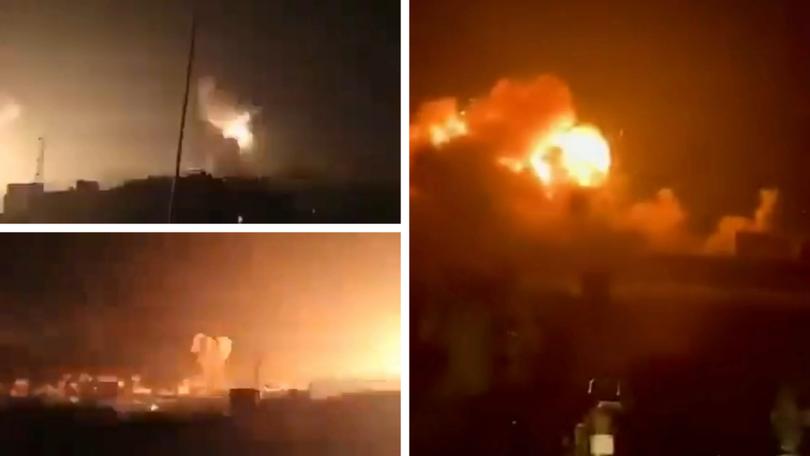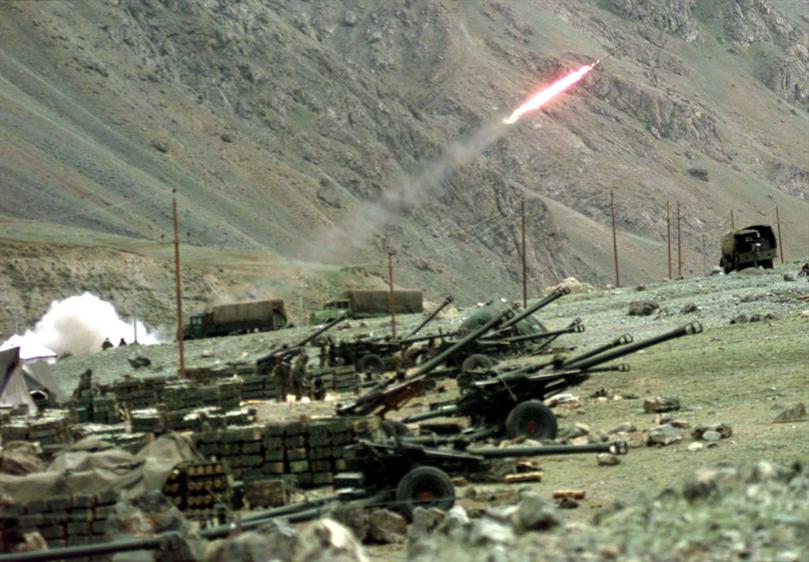India Pakistan news explainer: Why did India strike Pakistan and Kashmir and what caused the attacks?

Operation Sindoor is the latest flashpoint in decades of simmering tension and conflict between India and Pakistan.
The Indian Government launched the operation overnight, killing at least eight people and injuring 30 others at various sites within Pakistan and Pakistan-occupied Jammu and Kashmir.
The strike was in response to what Indians have labelled the Pahalgam Massacre, a terrorist attack that killed 27 people in the picturesque tourist town in the Himalayas that has been described as the “Switzerland of India”.
Sign up to The Nightly's newsletters.
Get the first look at the digital newspaper, curated daily stories and breaking headlines delivered to your inbox.
By continuing you agree to our Terms and Privacy Policy.A group called the Resistance Front, a splinter group affiliated with the terrorist organisation Laskar-e-Taiba, claimed responsibility for that attack on April 23.
After the Pahalgam attack India slammed Pakistan, accusing it of supporting terrorism, expelling Pakistani diplomats and calling back its own from Pakistan.
Pakistan responded with its own sanctions, including closing its airspace and border crossings.
But the simmering tension between the two countries stretches back much further, starting in 1947 with the Partition of British India.
Partition of British India
When India was liberated from British rule in 1947, it was divided into two countries — India and Pakistan.
Pakistan was designed to be a Muslim country while India was intended to be predominantly Hindu.
Overnight, a line was literally drawn down a section of India, separating families and friends, and leading to bloody conflict.
“Thousands of women were raped, at least one million people were killed, and ten to fifteen million were forced to leave their homes as refugees,” author Yasmin Khan wrote in her book The Great Partition: The Making of India and Pakistan.
“One of the first events of decolonisation in the twentieth century, Partition was also one of the most bloody.”
Indo-Pakistani wars
Partition sparked the first Indo-Pakistani war of the 20th century, involving the disputed territories of Kashmir and Jammu.
The Pakistani Government sent forces in to ensure the territories, which had a majority Muslim population, did not fall under Indian control.
The war lasted for just over a year before a formal ceasefire was agreed, which gave Pakistan control over a third of the region.
These areas became known as Pakistan-administered Kashmir.
In 1965, another war started after the Pakistani government began Operation Gibraltar, a mission designed to spark an uprising against the government in the Indian controlled territories.
India responded by attacking Pakistan, and a 17-day war ensued in which thousands were killed.
Another Indo-Pakistani war erupted in 1971, but this time it was not centred on Kashmir.
The conflict began when India intervened in the Bangladesh liberation movement in East Pakistan. Pakistan retaliated but lost, with more than 90,000 of its troops surrendering to Indian and Bangladeshi forces.
The territory gained by India became the People’s Republic of Bangladesh.
Full timeline of hostilities between India and Pakistan
1947 — Months after British India is partitioned into a predominantly Hindu India and a Muslim-majority Pakistan, the two young nations fight their first war over control of Muslim-majority Kashmir, then a kingdom ruled by a Hindu monarch. The first war between India and Pakistan killed thousands before ending in 1948.
1949 — A UN-brokered ceasefire line leaves Kashmir divided between India and Pakistan, with the promise of a UN-sponsored vote that would enable the region’s people to decide whether to be part Pakistan or India. That vote has never been held.
1965 — The rivals fight their second war over Kashmir. Thousands are killed in inconclusive fighting before another ceasefire is brokered by the Soviet Union and the United States. Negotiations in Tashkent run until January 1966, ending in both sides giving back territories they seized during the war and withdrawing their armies.
1971 — India intervenes in a war over the independence of East Pakistan, which ends with the territory breaking away as the new country of Bangladesh. An estimated 3 million people are killed in the conflict.
1972 — India and Pakistan sign a peace accord, renaming the ceasefire line in Kashmir as the Line of Control. Under the agreement, each nation would retain the section of Kashmir that it had already held for more than two decades. Both sides deploy more troops along the frontier, turning it into a heavily fortified stretch of military outposts.
1989 — During a period of intense political turmoil sparked by disputed local election results, Kashmiri dissidents, with support from Pakistan, launch a bloody rebellion against Indian rule. Indian troops respond with brutal measures, intensifying diplomatic and military skirmishes between New Delhi and Islamabad.
1999 — Just three months after Pakistan’s prime minister Nawaz Sharif hosted his Indian counterpart Atal Bihari Vajpayee in a goodwill gesture aimed at securing peace, both nations would be fighting over Kashmir once again. Pakistani soldiers and Kashmiri fighters seized several Himalayan peaks on the Indian side. India would respond with aerial bombardments and artillery.

At least 1000 combatants are killed over 10 weeks, and a worried world fears the fighting could escalate to nuclear conflict. The US eventually steps in to mediate, with the fighting eventually ending with Mr Sharif urging the withdrawal of the infiltrators. He would be ousted months later in a military coup by the Pakistani general behind the military incursion into Kashmir.
2016 — Militants sneak into an army base in Indian-controlled Kashmir, killing at least 18 soldiers. India responds by sending special forces inside Pakistani-held territory, later claiming to have killed multiple suspected rebels in “surgical strikes.” Pakistan denies that the strikes took place, but it leads to days of major border skirmishes. Combatants and civilians on both sides are killed.
2019 — The two sides again come close to war after a Kashmiri insurgent rams an explosive-laden car into a bus carrying Indian soldiers, killing 40. India carries out airstrikes in Pakistani territory and claims to have struck a militant training facility. Pakistan later shoots down an Indian warplane and captures a pilot. He is later released, deescalating tensions.
2025 — Militants attack Indian tourists in the region’s resort town of Pahalgam and kill 26 men, most of them Hindus. India blames Pakistan, which denies it. India vows revenge on the attackers as tensions rise to their highest point since 2019. Both countries cancel visas for each other’s citizens, recall diplomats, shut their only land border crossing and close their airspace to each other. New Delhi also suspends a crucial water-sharing treaty.
— With Associated Press

